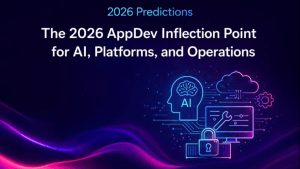ABSTRACT: Starburst, a leading data platform with Starburst’s federated query engine for applications and AI, announced a record-breaking fiscal year, 2025, showcasing remarkable growth across key business metrics. The company’s expansion underscores the increasing enterprise demand for data platforms that support open, hybrid data lakehouses, with the tide rising for on-premises and cloud data to be joined for AI. This note highlights the financial and strategic milestones achieved, such as the Dell Technologies partnership by Starburst, analyzes its competitive positioning, and examines the broader implications of its success within the data management ecosystem.
Key Highlights from Starburst’s FY25 Performance
- Customer Growth: Starburst experienced a 20% increase in net new customers, with Starburst Galaxy growing by 76% year-over-year.
- Revenue Expansion: Achieved record global sales, with notable growth in North America and EMEA.
- Product Adoption: Starburst Galaxy’s adoption surged by 94% year-over-year.
- Landmark Deal: Signed the largest contract in company history, a multi-year, eight-figure per year agreement with a global financial institution.
- Enterprise Customer Base: Increased ARR per customer to over $325,000 and expanded presence among financial institutions, now serving 10 of the top 15 global banks.
- Strategic Partnership with Dell: Selected as the analytics query engine for Dell’s Data Lakehouse, playing a central role in Dell’s AI Factory GTM.
The Success of Starburst and the Importance of Data Remaining in Place
One of the defining factors of Starburst’s success is its ability to enable data analytics without data movement. Starburst’s federated query engine allows enterprises to analyze data in place, reducing latency and cost, according to their reports, unlike traditional data warehouses that require ingestion, replication, and transformation. This approach is particularly valuable in sectors with stringent regulatory and compliance requirements, such as financial services, healthcare, and government.
Why Starburst Galaxy Matters
Starburst Galaxy, the company’s cloud-native platform, has emerged as a growth engine, with a 94% increase in adoption. Galaxy’s success underscores a broader industry shift toward managed services that provide cloud-scale analytics while maintaining openness and interoperability. By enabling users to run federated queries across multiple cloud and on-prem data sources, Starburst Galaxy differentiates itself from proprietary cloud data warehouse compute and storage engines, such as Snowflake and Databricks, which often require data migration and vendor lock-in. However, they are embracing iceberg for open storage.
The Role of Starburst in the Dell Partnership
Starburst’s collaboration with Dell Technologies significantly validates its enterprise appeal. Dell selected Starburst as the federated query engine for its Data Lakehouse, forming part of the backbone of its AI Factory GTM. This partnership exemplifies how open data lakehouse architectures are becoming the foundation for AI and analytics workloads. By combining Dell’s Power-Family scalable storage with Starburst’s federated query engine, enterprises can harness AI-driven insights without moving data—a critical factor for hybrid and on-prem environments.
Starburst and the Composable Data Ecosystem
Justin Borgman, CEO of Starburst, has emphasized the importance of open, composable data platforms. In a recent interview on theCUBE with myself and George Gilbert, Borgman highlighted how enterprises seek alternatives to proprietary data warehouses to maintain control over their data strategy. The rise of Apache Iceberg as a standard open table format has played a crucial role in this transformation, allowing organizations to maintain governance, interoperability, and flexibility.
Borgman also noted that Starburst’s ability to federate queries across diverse data sources, including on-prem relational databases, cloud data lakes, and streaming platforms, positions it as a cost-effective and scalable alternative to traditional cloud data warehouses. This approach is particularly valuable for organizations operating multi-cloud or hybrid environments that require real-time data access without migration overhead.
Conclusion
Starburst’s record FY25 growth is a testament to Starburst’s federated query engine’s ability to solve enterprise data challenges in an era of AI-driven applications. The company’s strong market position is underpinned by its commitment to open architectures, federated query capabilities, and strategic industry partnerships. With Starburst Galaxy gaining momentum and enterprise adoption expanding, the company is poised to disrupt the data management landscape further, mainly as organizations prioritize cost efficiency, compliance, and AI readiness.
Starburst’s success signals a broader trend as the market evolves: organizations increasingly embrace open data platforms to power AI and analytics without vendor lock-in. This doesn’t mean everyone is stepping away from Snowflake, Databricks, Google BigQuery, or Amazon Aurora and moving solely on-prem, but are connecting all this with proprietary data they keep in Oracle Exadata, Teradata, or even Mircosoft SQL server. The continued growth of Iceberg-embracing architectures, hybrid data lakehouses, and composable analytics platforms will only accelerate this shift, positioning Starburst as an enabler of the next generation of data-driven enterprises.



